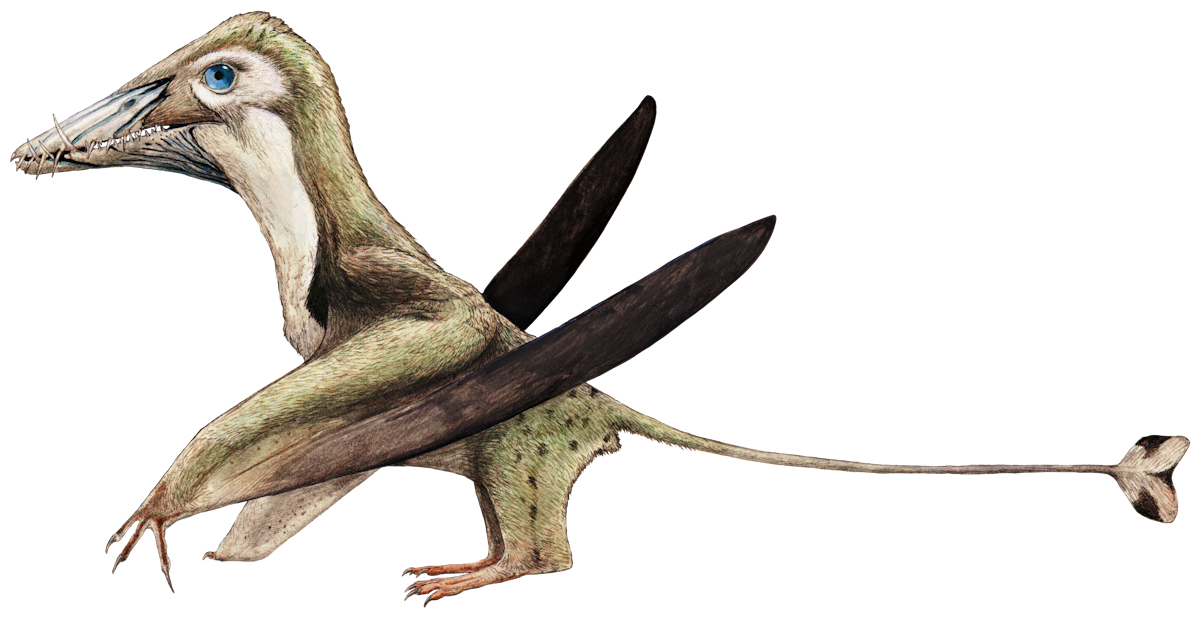Dorygnathus



Dorygnathus was first discovered in rocks of the Posidonia Shale in Germany in the early 19th century and decribed in 1830. The Posidonia Shale was deposited in the Early Jurassic about 180 million years ago and was formed in a shallow sea that covered much of Europe at the time. Since the 1830s many specimens of Dorygnathus have been collected from the original site in Germany as well as in France. Dorygnathus lived alongside another early pterosaur, Campylognathoides, and hunted in seas filled with fish, ammonites, and other cephalopods, as well as marine reptiles like ichthyosaurs and plesiosaurs.
Dorygnathus, like all known pterosaurs of the Early Jurassic, retained a long tail which may have borne a vertical vane at its tip. The neck of Dorygnathus was somewhat short, being about the same length as the skull. The skull was long and triangular in profile, with the lower jaw coming to a sharp point. The teeth of Dorygnathus are heterodont, showing two major tooth sizes. At the tips of the jaws, the first four tooth positions of the upper jaw and first three tooth positions of the lower jaws bore extremely long and stout teeth. These teeth were pointed away from the jaws in a rosette pattern, and were interfingered when the jaws were closed. Further back in the jaws, the teeth became much smaller and pointed only slightly forward. A large number of specimens of Dorygnathus are known, and the largest examples have wingspans of about 1.5 meters (about 5 feet).
Dorygnathus was an aerial fisher, using its two different tooth types to help capture prey. The long teeth at the tips of the jaws could both grasp prey and also act as a sieve or net preventing the escape of food. The shorter teeth further back in the jaw are ideally suited to grasping slippery prey items. Dorygnathus probably flew low over the waves and grasped fish or squid that swam close to the surface.
Dorygnathus has been long regarded a member of the Rhamphorhynchidae, a large family of long-tailed fish-eating pterosaurs known from Jurassic rocks from around the world. Rhamphorhynchidae has two subfamilies, the broader-snouted and shorter-toothed scaphognathines and the pointier-snouted longer-toothed rhamphorhynchines. In a recent phylogenetic analysis by Brian Andres and Timothy Myers, Dorygnathus was found to be the earliest branching member of the rhamphorhynchine lineage. That same study found that rhamphorhynchids were very closely related to the short tailed pterosaur lineage, the pterodactyloids, which first emerged in the Late Jurassic and would come to dominate the Cretaceous skies.
1.5 m (5 ft)



